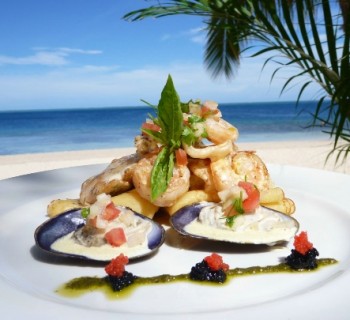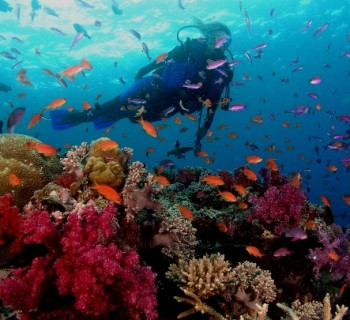Fiji Islands
In Oceania, the Republic of Fiji is located, which occupies the archipelago of the same name. The largest islands in Fiji are Vanua Levu and Viti Levu. In total, the archipelago has more than 300 islands, but 100 of them have no inhabitants. Fiji is 1,700 km away from Australia. The state covers an area of about 18.3 thousand km. sq. Its capital is the city of Suva, located on the island of Viti Levu. Major cities of the island nation are also Lautoka, Lambasa, Savusavu and Nadi..
The Fiji Islands were discovered by A. Tasman in 1634. James Cook was also involved in the study of the islands. British missionaries appeared here in 1835. A little later, Great Britain declared Fiji its colony. The state gained independence in 1970. Fiji withdrew from the British Commonwealth of Nations in 1987, receiving the status of a republic. The local population is engaged in subsistence farming, since the fertile volcanic soils make it possible to obtain more than one harvest per year. Tourism is of great importance for the country's economy.
Geographic features
Most of the island's territory is a plateau crossed by ridges. The highest point is Mount Tomanivi, which is located on the island of Viti Levu. Its height is 1322 m. There are mountains of volcanic origin on the islands. The territory of the islands is divided into areas: central, northern, eastern and western.
Fiji climate
The islands are dominated by an oceanic tropical climate. It is hot and humid in all seasons. Summer in Fiji lasts from November to May. The air during this period has a temperature of about +28 degrees. The maximum amount of precipitation falls on the islands at this time. In the lowlands, precipitation is less frequent than on the mountain slopes. Winter lasts here from June to November. The weather at this time of the year is cooler and drier. The average air temperature is +22 degrees. Fiji Islands are prone to hurricanes as they are located in the Pacific cyclonic belt.
Natural world
The mountainous areas of the islands are covered with tropical forests. Scientists have counted over 476 plant species in Fiji. In humid forests, valuable tree species grow: mahogany and teak, bamboo, etc. Savannahs are found in areas where the humidity is slightly lower. Mangroves can be seen on the coasts. Insignificant areas of the islands are reserved for pastures and meadows. Rare bird species are found in Fiji. There are many amphibians: snakes and lizards. Coastal waters are home to tropical fish, shrimp, crabs and other marine life.


